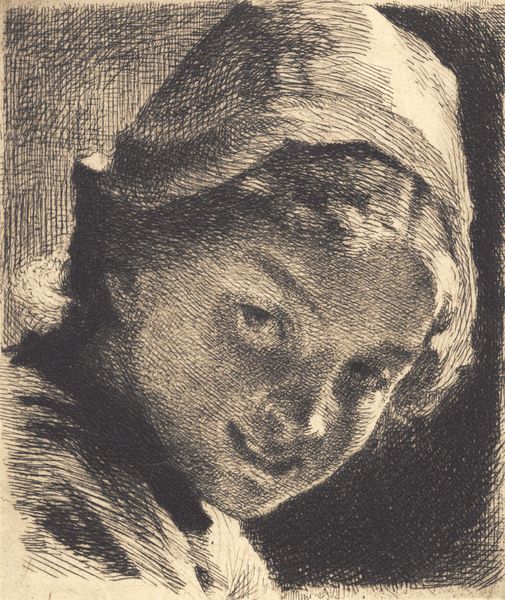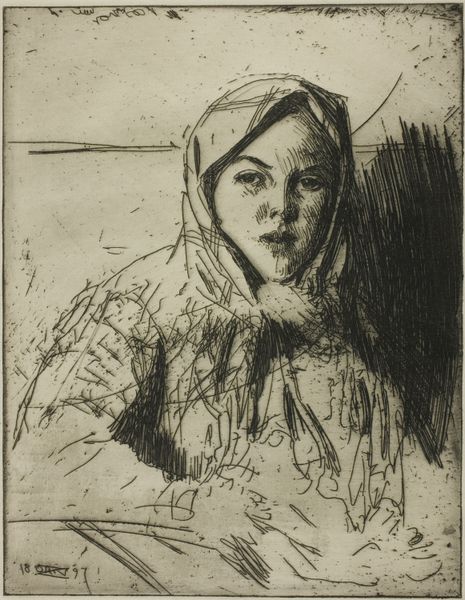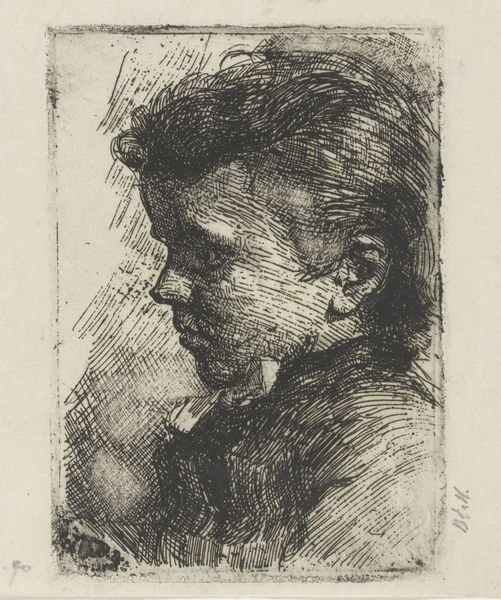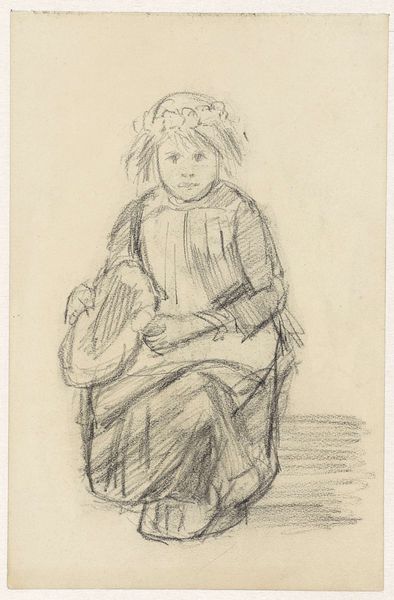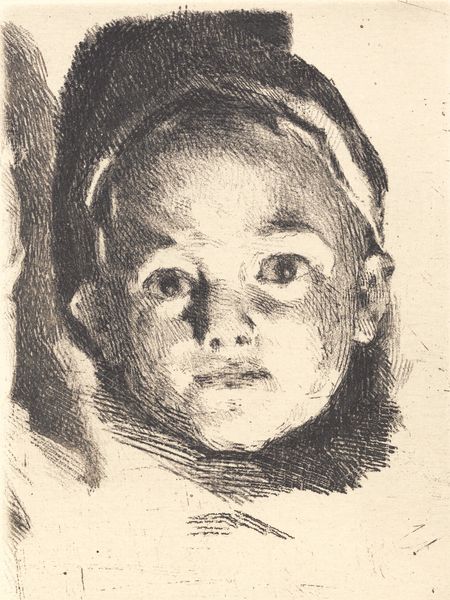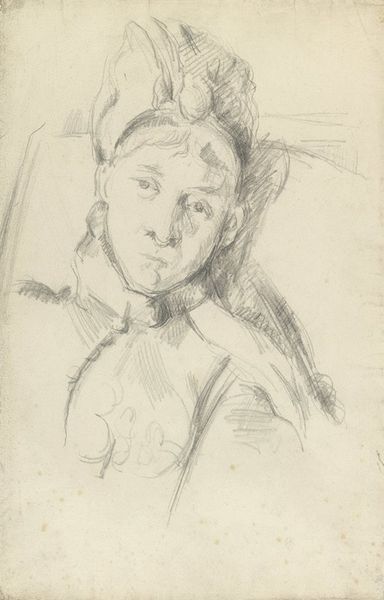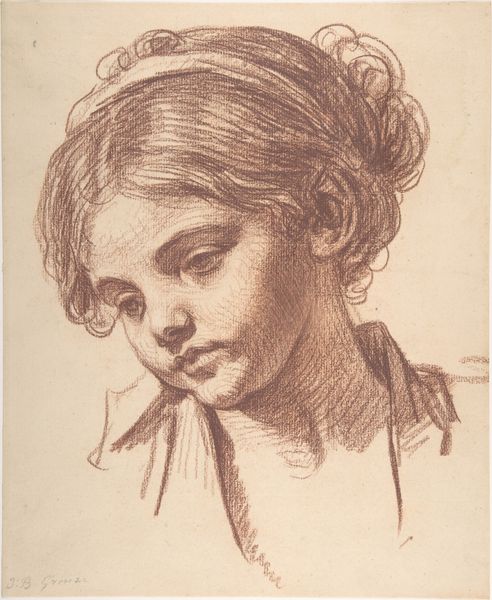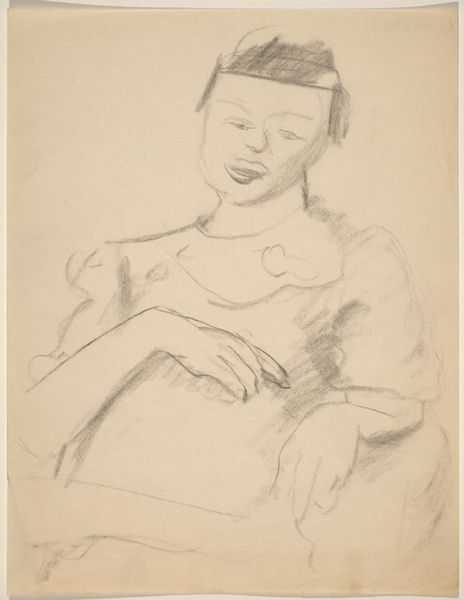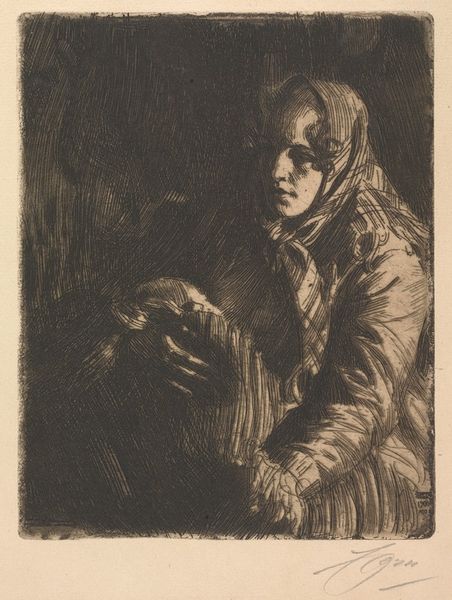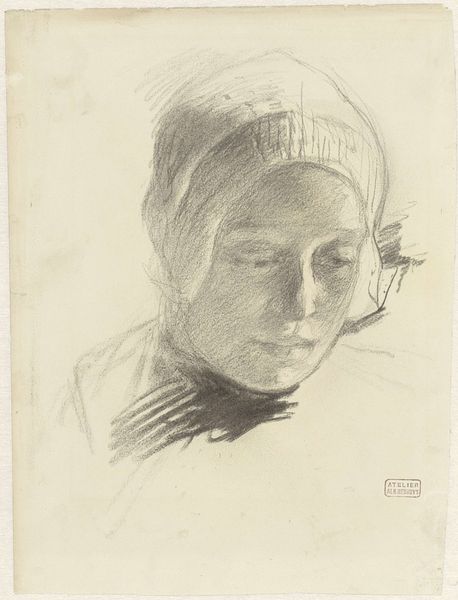
Ung kvinde med hue, en face, støttende hovedet i hænderne. Brystbillede 1865 - 1917
0:00
0:00
drawing, print, etching
#
portrait
#
pencil drawn
#
drawing
#
facial expression drawing
# print
#
etching
#
pencil sketch
#
portrait reference
#
pencil drawing
#
portrait drawing
Dimensions: 138 mm (height) x 97 mm (width) (plademaal)
Editor: Here we have "Young Woman with a Headscarf, Face On, Head in Her Hands. Bust Portrait" by Frans Schwartz, likely created sometime between 1865 and 1917. It's an etching, giving it a delicate, almost vulnerable quality. There's a pensiveness in the subject's face; I wonder what she's thinking about. What do you see in this piece? Curator: Beyond the immediately visible pensiveness, I see a layered commentary on the social constraints placed upon women, even subtly. Her headscarf, while seemingly simple, marks her within a certain social sphere – potentially one of domesticity and restricted agency. The very act of supporting her head in her hands, while suggesting introspection, can also be interpreted as a sign of weariness, perhaps even resistance to those limitations. What does her closed-eyes posture communicate to you about the limited range of self-expression accessible to women of that era? Editor: I hadn't considered it as resistance, but that's an interesting perspective. It’s like she's retreating inward as a form of quiet rebellion. Are you suggesting that Schwartz was consciously using this image to critique those societal norms? Curator: Precisely. Remember, this period was rife with burgeoning feminist thought, and artists were often subtle mouthpieces for those emerging ideologies. The etching medium itself – often associated with intimate, domestic scenes – becomes a powerful vehicle for this subversive messaging. Can you imagine this image being exhibited in a space traditionally dominated by grand historical paintings, implicitly challenging the very definitions of power and representation? Editor: That's powerful! So, it’s not just a portrait of a young woman; it's a quiet statement about her place in the world and the potential for inner strength. Curator: Exactly. Art can act as both mirror and catalyst, reflecting the socio-political climate while simultaneously pushing for change, urging viewers to examine critically the narratives being presented and the ones being suppressed. Editor: I'll definitely look at portraits differently from now on, considering the layers of meaning embedded within them! Curator: And that's exactly the power of art – it invites us to engage with the world in a more nuanced and critically conscious way.
Comments
No comments
Be the first to comment and join the conversation on the ultimate creative platform.

